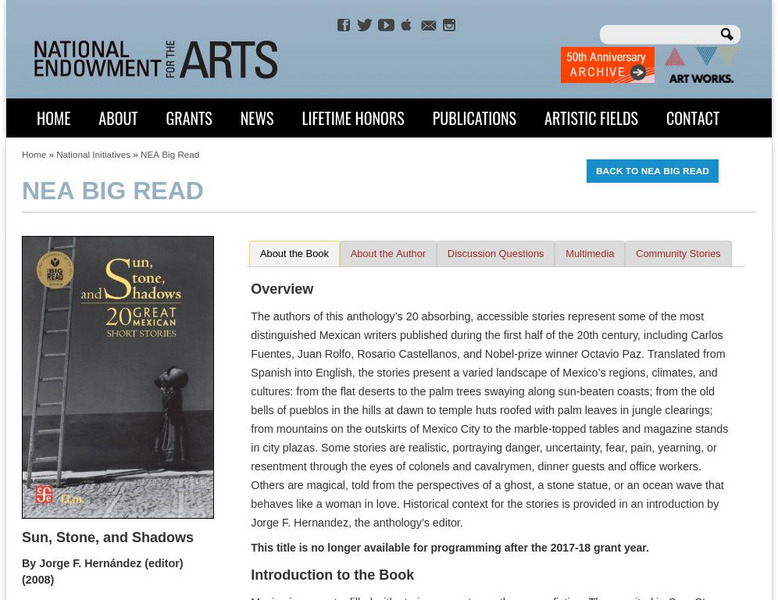Hi, what do you want to do?
Curated OER
Changing circuits
Students identify that there are conventional symbols to represent the components in circuits. Students use these symbols to draw diagrams of circuits. They are reminded that electric circuits can be drawn in diagrams using symbols. ...
Curated OER
Changing Circuits
Students observe an on-line activity to review the basics of electrical circuitry, then research answers to related questions on-line.In this lesson on changing components in a series circuit, students discover how different components...
Curated OER
How We See Things
Students explain that when a beam of light is reflected from its surface, it changes direction. For this virtual science experiment lesson plan, students complete an activity that requires them to investigate how flat mirrors reflect...
Curated OER
Student Exploration: 2D Eclipse
In this earthquake exploration worksheet, students complete 2 prior knowledge questions, then use "2D Eclipse Gizmo" to conduct several activities, completing short answer questions when finished.
Curated OER
Student Exploration: Eclipse
In this earthquake exploration worksheet, students complete 3 prior knowledge questions, then use "Eclipse Gizmo" to conduct several activities, completing short answer questions when finished.
Curated OER
Location
Students explore the tools used by Columbus to chart his latitude. They study the change of a location over time.
San Francisco Symphony
Lesson Ideas for Any Music
Music is a wonderful tool you can add to enhance the learning process for every subject. Here is a list of music selections that are categorized by subject, along with some neat teaching suggestions. You'll find songs suited to...
Curated OER
Right Triangle Trigonometry
In this geometry worksheet, 10th graders use right triangle trigonometry to find the missing angle measure. The two page worksheet contains fourteen problems. Answers are provided.
Curated OER
Weather Walks
Students study weather by taking walks in various types weather conditions.
Curated OER
Paper Plate Observation
Students analyze transits from previous scientists. They identify simple objects that could have been used for documentation in the science world. They also practice scientific inquiry using methodology.
Curated OER
Micro-organisms
Students examine how micro-organisms are living organisms that are often too small to be seen. They explain that micro-organisms may be beneficial or harmful.
Curated OER
How We See Things
Students explain that mirrors reflect light. They examine how when a beam of light is reflected from a surface, its direction changes.
Curated OER
Changing Circuits
Students participate in an online lesson to explain how to make bulbs brighter or dimmer in a series circuit by changing the number or type of components.
Curated OER
Curious? Will You Be Eclipsed?
In this "Curious? Will you be eclipsed?" worksheet, 4th graders answer 4 questions interactively about eclipses, then check answers online.
Curated OER
Comparing Eclipses
In this eclipses worksheet, students will compare diagrams of a total solar eclipse with a total lunar eclipse. Students will complete 6 short answer questions based on these diagrams.
Curated OER
Using Slope Angles
In this geometry worksheet, 10th graders use right triangle trigonometry to solve problems involving angle of elevation or depression. The one page worksheet contains eleven problems. Answers are not provided.
Curated OER
Applied Trigonometry Problems Day 2
In this geometry worksheet, students apply right triangle trigonometry to find missing distances or angles in real life examples involving angles of depression or elevation. The four page worksheet contains twelve problems. Answers are...
Curated OER
Intermediate Critical Reading - Clocks
In these critical reading worksheets, students read the short story about clocks. Students then answer 3 critical reading questions about the passage.
Curated OER
How Distant Is The Moon?
Students discover how Aristarchus, a Greek astronomer around 230 BC, used a simple observation of the eclipse of the Moon, plus clever reasoning, to deduce the distance of the Moon. They practice the same calculation technique.
National Endowment for the Arts
National Endowment for the Arts: The Big Read: Sun, Stone, and Shadows
Resource provides a description, questions, essay topics, lesson plans, biographies, and notes guide a reading of Sun, Stone, and , Shadows, a compilation of short stories by twentieth-century Mexican authors Juan Rulfo, Octavio Paz,...
University of Chicago
University of Chicago: What's Your Slant? Sun and Shadows
This fun activity helps you to understand the movement of the sun by studying shadows.
PBS
Pbs Learning Media: Shifting Shadows
Why does your shadow move throughout the day? Watch this PEEP video [1:27] to understand how the sun's movement causes our shadow to change direction, shape, and size. Also included are teaching tips and how to conduct your own chalk...
E-learning for Kids
E Learning for Kids: Science: Scotland: Why Do Shadows Change During the Day?
William is a Scottish boy who is learning about the sun and how it casts shadows. Try to help him find out.
ClassFlow
Class Flow: Earth, Sun and Moon
[Free Registration/Login Required] In this unit children learn about the shapes and relative sizes of the Earth, Sun and Moon. Using models they learn how the three bodies move relative to each other and how these movements relate to...




























